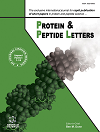-
oa iRGD Tumor Penetrating Peptide-Modified NK Cells Exhibit Enhanced Tumor Immune Infiltration Ability and Anti-Tumor Efficacy
- Source: Protein and Peptide Letters, Volume 32, Issue 3, Mar 2025, p. 183 - 193
-
- 05 Sep 2024
- 16 Dec 2024
- 07 Feb 2025
Abstract
Natural killer (NK) cells, as part of the group I innate lymphocytes (ILCs) are essential for tumor immune surveillance. NK cells can recognize and eliminate target cells without the need for prior sensitization or restriction of major histocompatibility complexes (MHCs) and antigens. However, the limited infiltration of metastatic NK cells poses significant challenges for advancing adoptive cell immunotherapy for solid tumors.
This study aimed to explore the potential of using tumor penetrating peptide (TPP) iRGD to promote the delivery of activated NK cells to deeper layers of tumor tissue.
Flow cytometry was performed to evaluate the activation, inhibition, and expression of other receptors involved in cytotoxicity. High-pressure liquid chromatography (HPLC) and mass spectrometry were used to detect the purity of iRGD. 1,2-distearoyl-sn-glycero-3-phosphoethanolamine-poly(ethylene glycol)-iRGD (DSPE-PEG-iRGD) was synthesized. Surface modification of cells was performed using DSPE-PEG-iRGD. Multicellular tumor spheroids (MCTSs) were established to evaluate permeability. In addition, in order to better simulate the physiological characteristics of solid tumors in vivo, we generated 3D spheroids from HGC27 gastric cancer cell line and BXPC-3 pancreatic cancer cell line to study the anti-tumor effect of NK cells with combination iRGD in vitro. The mouse models of gastric cancer and pancreatic cancer were used. In addition, the synergistic anti-tumor effects were evaluated in vivo based on the tumor volume and body weight of mice.
Initially, we treated NK cells with interleukin-2 (IL-2), resulting in significant activation as indicated by upregulation of CD56. On the 15th day, the proliferation of CD3-/56+cell population in NK cell culture containing IL-2 significantly increased, and the NK cell amplification factor was greater than 300. In addition, NK cells exhibited increased cytotoxicity towards cancer cell lines. When the ratio of effect to target was 10:1, the killing rate of NK cells against BXPC-3 was 83.1%. iRGD modification enabled NK cells to penetrate MCTSs, resulting in cytotoxicity against target HGC27 and BXPC-3 cells. In addition, NK cells modified with iRGD significantly reduced tumor growth in the xenotransplantation model of gastric cancer and pancreatic cancer mice model.
In summary, our results indicated that NK cells exhibited higher efficacy and lifespan against cancer cell lines in vitro. Furthermore, the integration of iRGD into NK cells led to improved infiltration and targeted elimination of MCTSs. Moreover, the application of iRGD-modified NK cells has shown significant anti-tumor efficacy against solid tumors in vivo. This joint strategy may significantly improve the efficacy of NK cell immunotherapy in treating various solid tumors.


